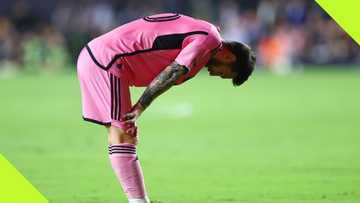4-3-3 formation in soccer: Roles, strengths, and setups
Every soccer fan who follows the sport closely is probably familiar with the 4-3-3 formation. This tactical setup has become popular among teams like Real Madrid and Barcelona, renowned for balancing defence and attack. But what are the specific roles, strengths, and setups that contribute to its effectiveness?
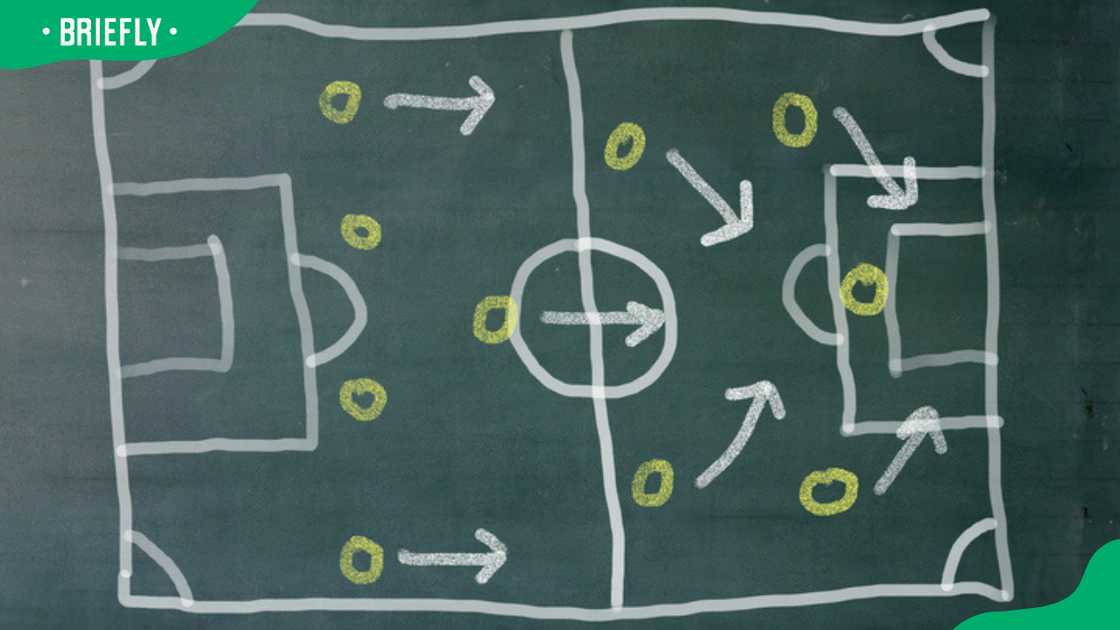
Source: Getty Images
TABLE OF CONTENTS
The 4-3-3 soccer formation is balanced with four defenders, three midfielders, and three attackers. Typically, a deeper midfielder supports two advanced players, while two wide forwards flank a central striker, offering width in attack.
Who invented the 4-3-3 formation?
The formation evolved from Uruguay and Brazil's 4-2-4 setup in the 1960s, notably when Mário Zagallo shifted from forward to midfield. In the 1970s, Rinus Michels' teams in the Netherlands and Ajax embraced this approach.
As published on FIFA's official website, they developed Total Football, which greatly influenced Johan Cruyff and led to the global adoption of the strategy. Football analyst Statman Dave explained in a 2017 YouTube video how Zinedine Zidane utilised this setup at Real Madsetupo to achieve notable success:
Zinedine Zidane took over as Real Madrid manager from Rafa Benitez on the 4th January 2016. Since that day, Real Madrid has won three trophies including the 2015/16 Champions League. Zidane's Real Madrid play a 4-3-3, this gets the best out of his talented squad including Cristiano Ronaldo, Toni Kroos, Sergio Ramos, and Marcelo.
What are the roles and responsibilities of 4-3-3?
The 4-3-3 tactics emphasise structure across defence, midfield, and attack, assigning specific roles to each position.
Defence
Full-backs push high up the field to provide width and support attacks, a tactic prominently used by Liverpool in the 2017/18 season. They also quickly retreat to support the backline when defending.
The centerbacks form a stable defensive core, supported by the defensive midfielder, who assists in recovering possession. Together, they strengthen the defensive structure and help transition play forward.
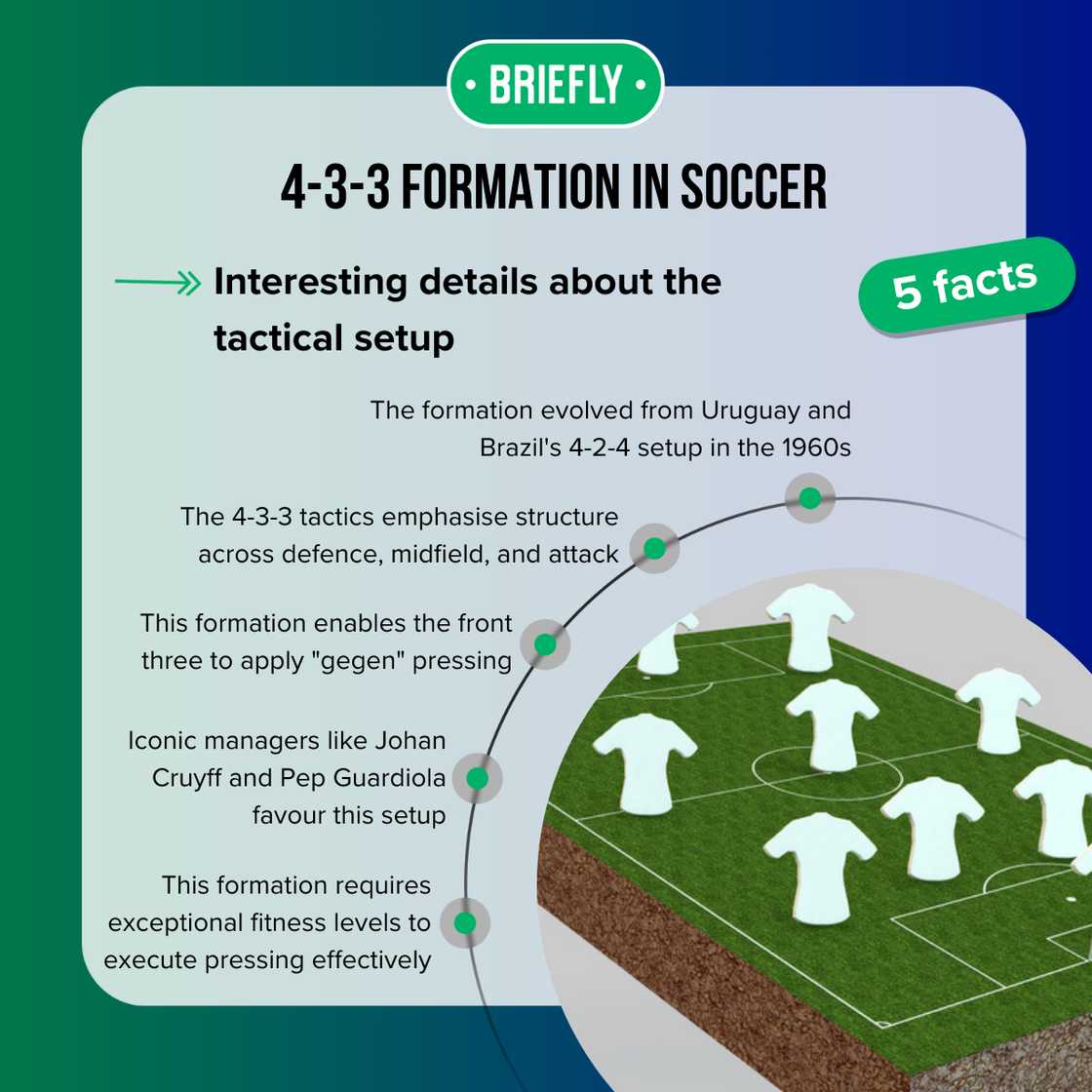
Source: Original
Midfield
As published on the Premier League's website, midfielders bridge defence and attack, maintaining fluid transitions, as Manchester City did in the 2018/19 season. They control the pace and support both offensive and defensive shifts.
Attack
Wingers isolate full-backs, cutting in to shoot or cross, a tactic seen in PSG's 2020/21 lineup with Kylian Mbappe. They create space for central players by moving defenders out wide.
The striker playing centre-forward drifts to create space and engage defenders, allowing midfield runs. They may also adopt the 'false nine' role to convert crosses and through balls into goals.
What are the strengths of a 4-3-3 formation?
Here is a look at its advantages:
- High/counter pressing: This formation enables the front three to apply "gegen" pressing, forcing opponents into mistakes. As Goal noted, Klopp's Liverpool exemplified this during their title-winning season.
- Central control: The midfield trio dominates possession and facilitates quick transitions, enabling fluid "tiki-taka" play. This approach creates multiple passing options and keeps defences under constant threat.
- Attacking width: Full-backs push forward to stretch defences, providing space for wingers. Liverpool's Trent Alexander-Arnold and Andrew Robertson's overlapping dynamic adds significant attacking depth.
- Flexible structure: The 4-3-3 easily transitions to setups like 4-4-2 or 4-5-1, enhancing solidity and options.
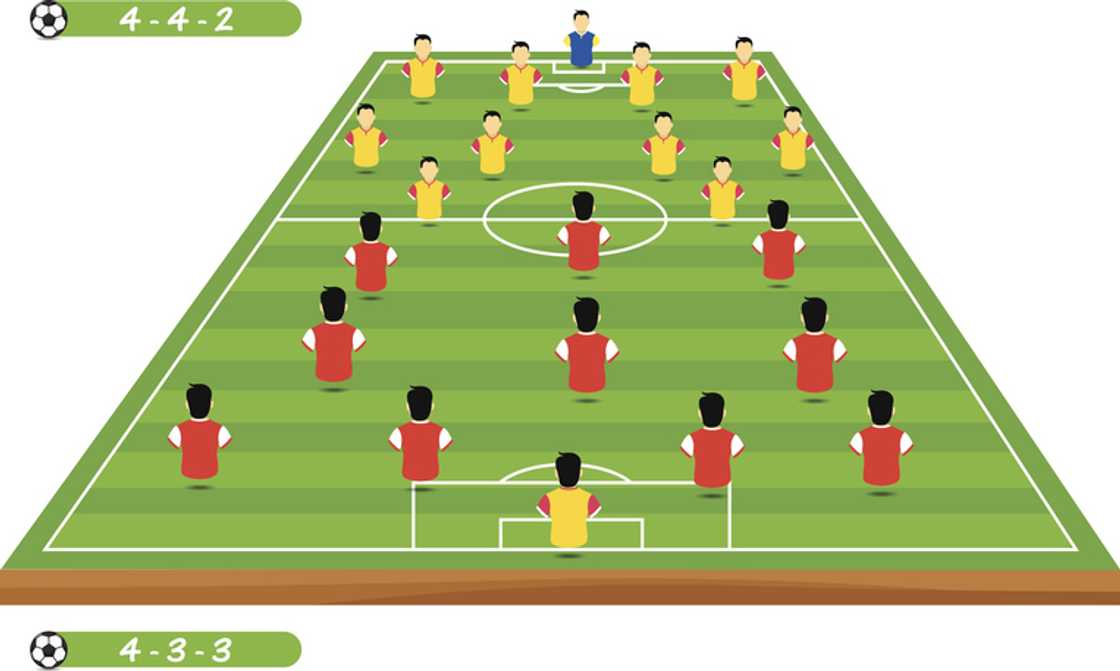
Source: Getty Images
What are the 4-3-3 formation weaknesses?
Below are some notable disadvantages related to the formation:
Defensive vulnerability
According to ESPN, it can expose defensive gaps, particularly when full-backs push too high, as seen in Aston Villa's 7-2 defeat of Liverpool in 2020-21. This makes the team susceptible to counter-attacks.
Fitness demands
This formation requires exceptional fitness levels to execute pressing effectively. A lack of stamina can lead to vulnerabilities against quick counter-attacks.
Discipline requirement
Full-backs must balance their attacking roles with defensive duties, demanding high discipline. Teams with weaker full-back play may struggle to maintain defensive integrity.
Over-reliance on key players
A 4-3-3 depends heavily on top talents, as seen with Cristiano Ronaldo at Real Madrid. His consistent goal-scoring was vital for the team's success in this formation.
Which clubs and managers prefer the 4-3-3 attack formation?
Iconic managers like Johan Cruyff and Pep Guardiola favour this setup. Today, football clubs such as Barcelona under Luis Enrique, Liverpool under Jürgen Klopp, and Real Madrid, led by Zinedine Zidane and Carlo Ancelotti, effectively utilise this system for modern football success.
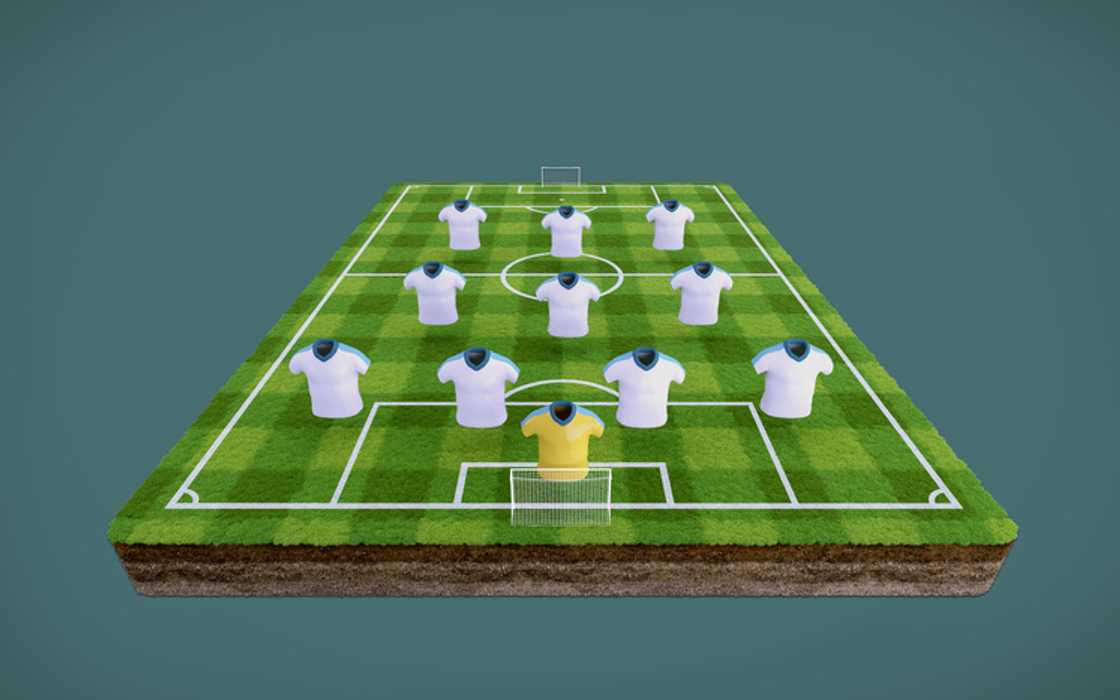
Source: Getty Images
FAQS
Below are some popular questions about one of soccer's iconic formations, along with the best answers:
- How many attacking players are there, given the formation of a 4-3-3? Three attacking players are typically positioned at the front.
- Is the 4-3-3 the best in football? While popular, its effectiveness varies by team, personnel, and strategy.
- Is 4-3-3 holding a good formation? This setup excels in maintaining possession, dominating central areas, and translating that control into offensive opportunities.
- How do you play a 4-3-3? Organise four defenders, three midfielders, and three forwards to ensure balanced offensive and defensive play.
- Why is 4-3-3 so popular? This formation balances attack and defence, facilitating possession dominance through three midfielders while providing defensive stability.
- What is the 4-3-3 meaning in soccer? The term describes a tactical arrangement featuring four defenders, three midfielders, and three forwards.
- How do you stop a 4-3-3 attack formation? To neutralise the lineup, teams can stretch play wide, create numerical advantages, and exploit the high defensive line with early passes.
The 4-3-3 formation is a versatile and strategic setup that renowned teams and coaches have effectively utilised throughout soccer history. As the game evolves, this formation adapts, demonstrating its strengths in offence and defence.
READ ALSO: Top richest football clubs in South Africa (with net worths)
As Briefly.co.za published, the richest football clubs in South Africa invest heavily in the sport and receive massive support from the government and society.
What are the richest football clubs in South Africa? Discover them, their year of existence, and details about their finances.
Source: Briefly News




